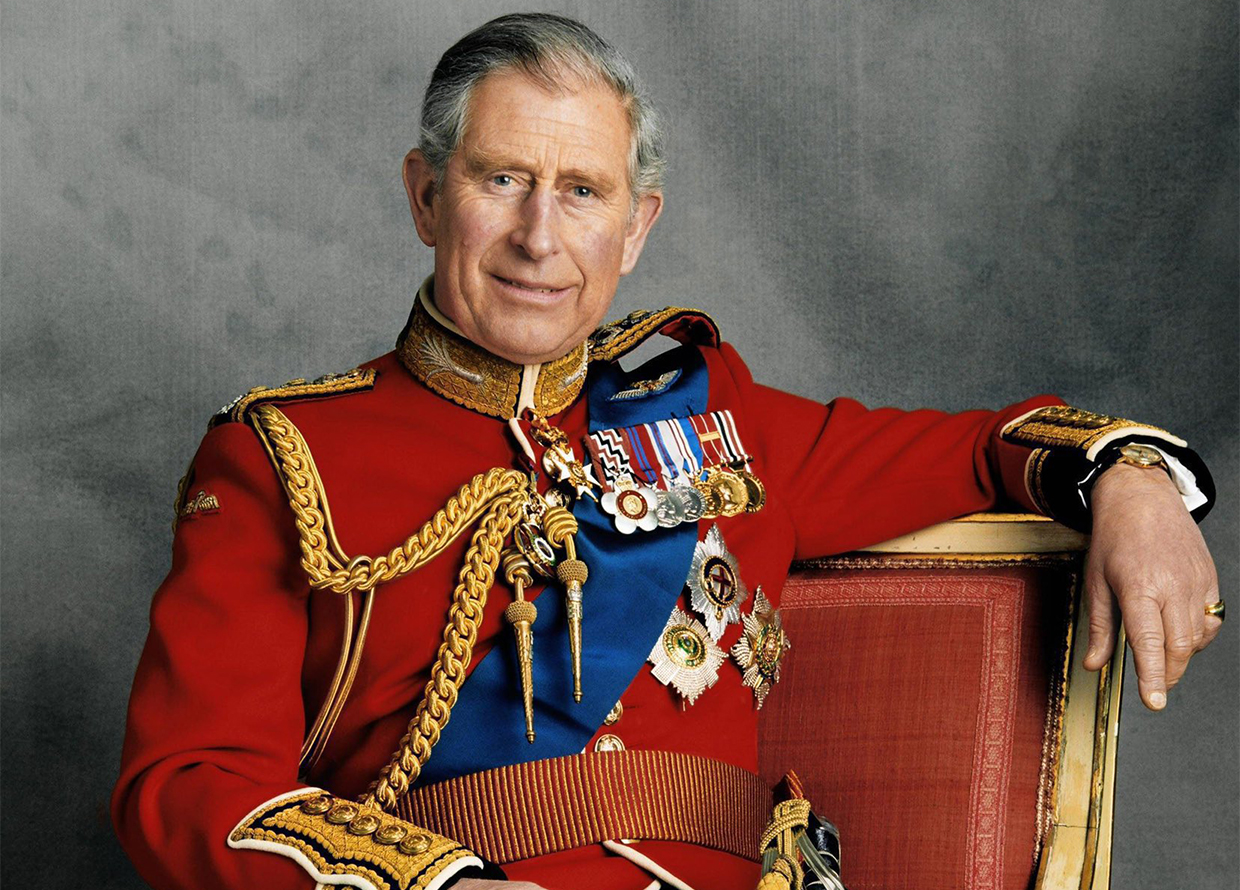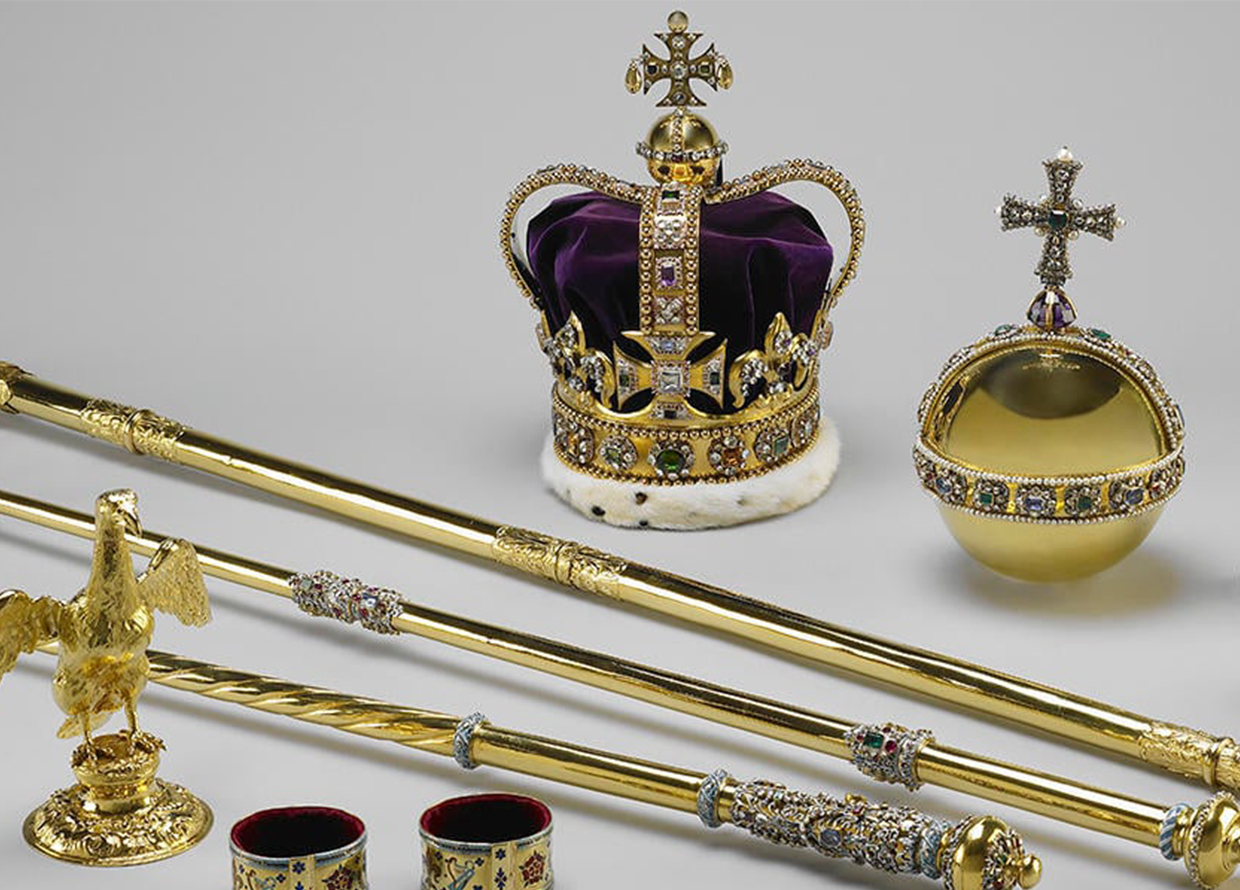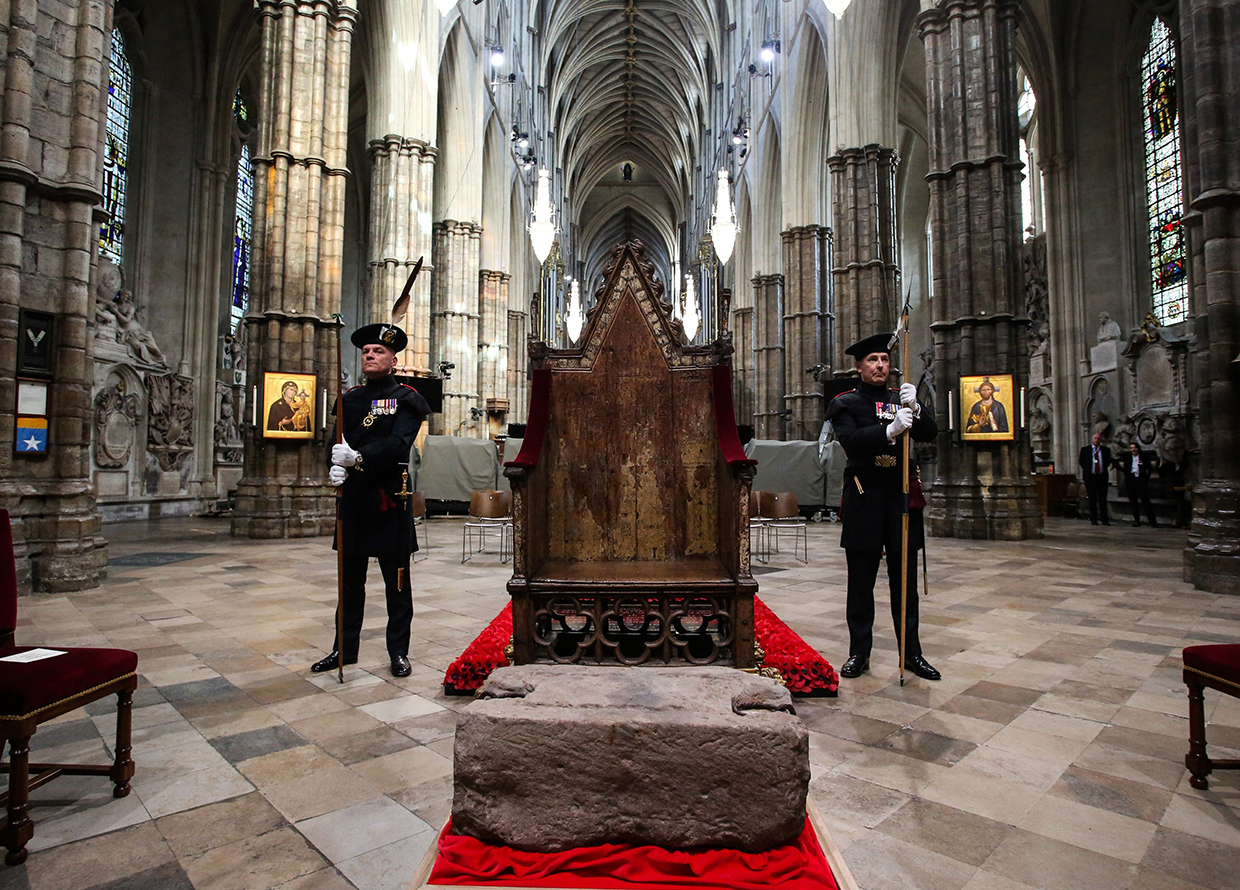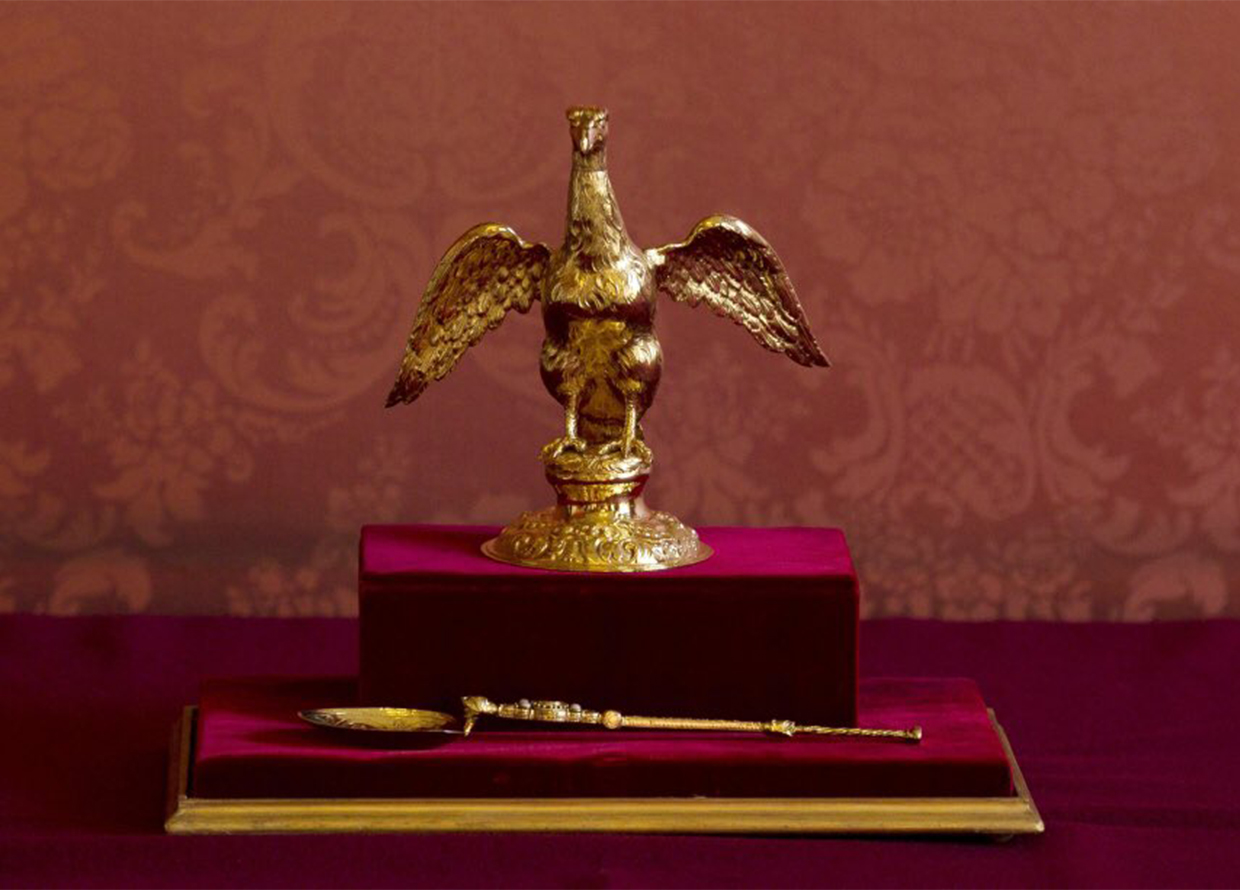Your guide to King Charles III’s coronation: Everything to know
Long live the King

A buzz of excitement is in the air as the UK prepares for the much anticipated Coronation weekend in which King Charles will be formally crowned as King alongside the Queen on 6 May 2023 at Westminster Abbey. King Charles III ascended the throne after his mother, Queen Elizabeth II, passed away on 8 September 2022 after reigning for 70 years. For many British residents and those around the world, His Majesty’s coronation will be their first as it will be televised for the first time live on social media for global audiences, unlike that of the late Queen in 1953. Evidently, there are millennium-long traditions surrounding this royal event which can be unfamiliar to many. Ahead, we break down what will happen at King Charles’ Coronation, who will be attending, what ways the new monarch is breaking from such traditions, where to watch it and more.
What is the coronation of British monarchs?

The coronation is a ceremony in which the monarch of the United Kingdom is formally invested with regalia (a set of emblems and paraphernalia indicative of royal status) and crowned at Westminster Abbey. The first documented coronation was that of William the Conqueror as early as 1066, which took place at Westminster, and the church has been Britain’s coronation church since then for thousands of years. King Charles III will be the 40th reigning monarch to be crowned.
The essential elements of the coronation have mostly remained unchanged for many millennia as strict traditions and customs have been passed down from one monarchy to the next. This includes the sovereign first being presented to and acclaimed by the people, the taking of the oath, followed by the anointing with holy oil, dressing with the regalia and crown and finally, the homage from their subjects. The ceremony will end with a closing procession, and as per the 20th-century tradition, the British Royal Family will appear on the balcony of Buckingham Palace to greet the public before a grand banquet.
Who is attending King Charles’s Coronation?

As members of the Royal Family go, Prince William and Kate Middleton, Princess Anne, Prince Edward, Princess Beatrice and Princess Eugenie will be in attendance. Prince Harry is also said to be there. However, Meghan Markle will be absent as it coincides with their son’s birthday.
Other foreign royals attending include Crown Prince Akishino and Crown Princess Kiko of Japan, Yang di-Pertuan Agong and Raja Permaisuri Agong Tunku of Malaysia, Prince Albert II and Princess Charlene of Monaco, King Vajiralongkorn and Queen Suthida of Thailand and more. Other notable world leaders and celebrity figures that will be seen at the coronation are First Lady Jill Biden, Chinese VP Han Zheng, French President Emmanuel Macron, Lionel Richie, Rowan Atkinson and Stella McCartney, among others.
The Coronation Procession

The procession will set off from Buckingham Palace at 10:20am BST (5:20pm MYT) along The Mall towards Trafalgar Square before turning and walking down Parliament Square towards the Great West Door of Westminster Abbey. Unlike tradition, King Charles and Camilla will be seated in the more comfortable Diamond Jubilee State Coach compared to the Gold State Coach.
The public is allowed to greet the monarch along The Mall and Whitehall on a first-come, first-served basis. Official screening sites are also available in Hyde Park, Green Park and St. James’s Park. Just under 200 members of the armed forces will walk the procession, and another 1,000 service personnel will line the route. This year’s overall procession is smaller as compared to the 1953 procession, where other royal families and Commonwealth prime ministers would take part.
The arrival at Westminster Abbey

King Charles is expected to arrive at Westminster wearing military uniform instead of the traditional breeches and silk stockings worn by previous kings. His entrance will be greeted with Greek Orthodox music, selected by the King, along with 12 newly commissioned pieces. The monarch has also sought a more diverse congregation to witness the ceremony and has carefully invited a total of 2,000 guests (Queen Elizabeth’s coronation saw over 8,000 guests attending) from his charity affiliations and voluntary sectors.
King Charles’s grandson, Prince George, is named one of the four Pages of Honour and the nine-year-old will carry his grandfather’s robes alongside three other pages who are the sons of His Majesty’s friends. The Queen Consort has selected her three grandsons and great-nephew as her Pages of Honour. Some will also be carrying the regalia to be placed on the altar when it is necessary for the ceremony.
What is the regalia?

The UK is currently the only European country that still uses the regalia during coronations. Each object symbolises different values, services and responsibilities that must be upheld by the monarch. King Charles will be presented with the Sovereign’s Orb (representing a Christian world), the Sovereign’s Sceptre with Cross (symbolising kingly justice and power), and the Sovereign’s Sceptre with Dove (representing the king’s mercy and spiritual role).
The recognition

In stage one of the coronation, King Charles will be presented to the people in the congregation. This is a tradition that dates back to the Anglo-Saxon period and involves the sovereign standing beside the 700-year-old Coronation Chair and turning to all four sides of the abbey. The Coronation Chair, also known as Edward’s Chair, was made in 1300 and is believed to be the oldest piece of furniture in the UK still used to this day for its intended purpose. Placed below it is the Stone of Destiny, which is an ancient symbol of Scotland’s monarchy and used for the inauguration of kings. Today, the sacred object was moved from Edinburgh Castle for the first time in 25 years to be transported to Westminster Abbey.
Archbishop of Canterbury Justin Welby will make the first declaration, however, in another break of tradition, the subsequent declarations will be carried over to the Lady of the Garter and the Lady of the Thistle, representing the oldest orders of chivalry in England and Scotland respectively. To end it, the congregation will proclaim “God Save the King!” with trumpet sounds.
The oath

Before the oath is taken, the Archbishop of Canterbury will acknowledge UK’s many different faiths present in the country as this is part of the King’s efforts to recognise ethnic diversity in modern Britain. The first oath is the Coronation Oath in which the new monarch will confirm that he will uphold the law and the Church of England during his occupation, all the while placing his hand on the Holy Gospel. The second oath, known as the Accession Declaration Oath, will affirm that the King is a “faithful Protestant.”
The anointing

For the third stage of the ceremony, the King’s ceremonial robe will be removed so that he can sit on the Coronation Chair to be anointed. This symbolises the spiritual role of the sovereign who is also the head of the Church of England. The Archbishop will then pour a special holy oil made from olives harvested in Jerusalem onto the Coronation Spoon (the oldest surviving relic of the regalia dating back to the 1300s) before anointing King Charles with a cross on his head, breast and hands.
Unlike that of Queen Elizabeth’s 1953 coronation, the King will be anointed out of sight, behind a three-sided screen instead of a canopy. This is because the act of anointing is considered the most sacred part of the service.
The crowning

This is the highlight of the entire coronation, which is when the King will wear St Edward’s Crown for the first and only time in his life. The crown is named after an earlier version used by Edward the Confessor before it was melted down by Oliver Cromwell after 1220. King Charles III will be the seventh monarch crowned in it.
Firstly, the monarch will be dressed in a golden coat known as the Supertunica and be presented with items of the regalia. The Archbishop will then place the crown on the King’s head and the abbey’s bell will ring for two minutes, with trumpet sounds and gun salutes fired across the UK in celebration.
The ascension to the throne

The coronation will close with the King taking his seat on the throne. Traditionally, royal members and peers will kneel before the sovereign and kiss his right hand to swear their allegiance. However, King Charles’s coronation will only see Prince William as the only royalty to kneel and pay homage to him after the enthronement. Further, the Archbishop will invite people present in the abbey, and those watching at home, to pledge their allegiance in what is called a “new and significant moment in the tradition of the coronation” by organisers.
The Queen Consort

After King Charles’s homage, Queen Camilia’s coronation will take place in a simpler ceremony. She will be anointed, crowned and enthroned wearing Queen Mary’s Crown, however, she is not required to take the oath.
To conclude the whole ceremony, the King and Queen will take the Holy Communion, a principal act practised in the Christian church.
What happens after the coronation?

Once the service is done, the King and Queen Consort will make their way back to Buckingham Palace on the Golden State Coach. Notably, the route will be significantly shorter at 1.3 miles compared to Queen Elizabeth’s five-mile route as it avoids several large sections of the city. As it previously took the late Queen 45 minutes for the whole procession to pass a single point, this new change was made for a more efficient procession back to the palace grounds. Once they return, they will uphold the tradition of appearing on the balcony of the palace (a custom since 1902) to greet the public and observe the fly-past which will involve members of the Army, Royal Navy and Royal Air Force in a grand air display.
What will happen on Coronation Weekend?

In celebration of the coronation, the UK will be having a weekend-long celebration as well as a Bank Holiday on Monday. People all over the UK will partake in the Coronation Big Lunch, in which communities and individuals are encouraged to share food and fun. Many street parties will be held whereby people can gather together to eat and foster deeper connections as a community. Think of it like a giant tea party!

Further, there will be a Coronation Concert held in Windsor Castle that will broadcast live on BBC on Sunday evening. Among the lineup of stars performing are Lionel Richie, Katy Perry, Andrea Bocelli, Nicole Scherzinger, Take That and more. There will be big screens set up in over 57 locations so that more than 100,000 people can catch the event from where they are. Some standout locations include Cardiff Castle, Piccadilly Gardens in Manchester and Belfast City Hall. There will also be screens placed in Hyde Park, Green Park and St James’s Park for those in London.
How to watch the Coronation live?
For Malaysians looking to watch King Charles’s Coronation and concert in real-time, it will be streamed on UnifiTV channel 601, Astro Channel 532 and on the BBC website and YouTube channel. The coverage will include events and documentaries in the lead-up to the grand ceremony. The coronation will also be live-streamed on the official Royal Family YouTube Channel here.
For more pop culture news, head here.
| SHARE THE STORY | |
| Explore More |



